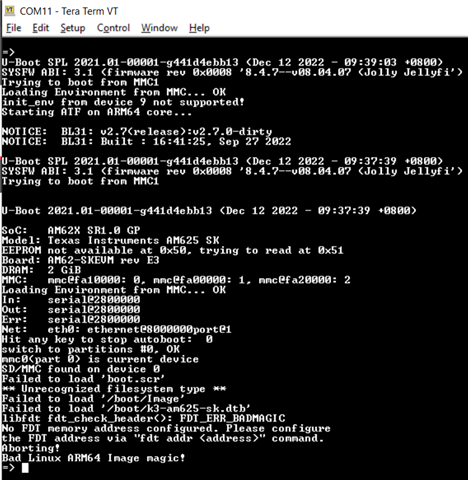Other Parts Discussed in Thread: SYSCONFIG
Hi Team,
Good day. I am posting this inquiry on behalf of the customer.
"We are currently using SK-AM62 for evaluation purposes.
We are using Code Composer Studio as a built environment to load programs into the board. However, we are facing an issue we hope to get your advice on.
JTAG Debugger: BlackHawk XDS200 USB Debug
Board: SK-AM62
Software: Code Composer Studio v12
Description: When debugging and loading the program into the board, the process will be stuck at GEL Expression:OnTargetConnect().
Remarks:
1. We have verified the integrity of the JTAG debugger and the board is working
2. We have looked through resource explorer documentation and tried many solutions on the web to no avail.
Attached below are the relevant files for your ease of reference."
Please help to advise. Thank you for extending your help.
Kind regards,
Marvin


